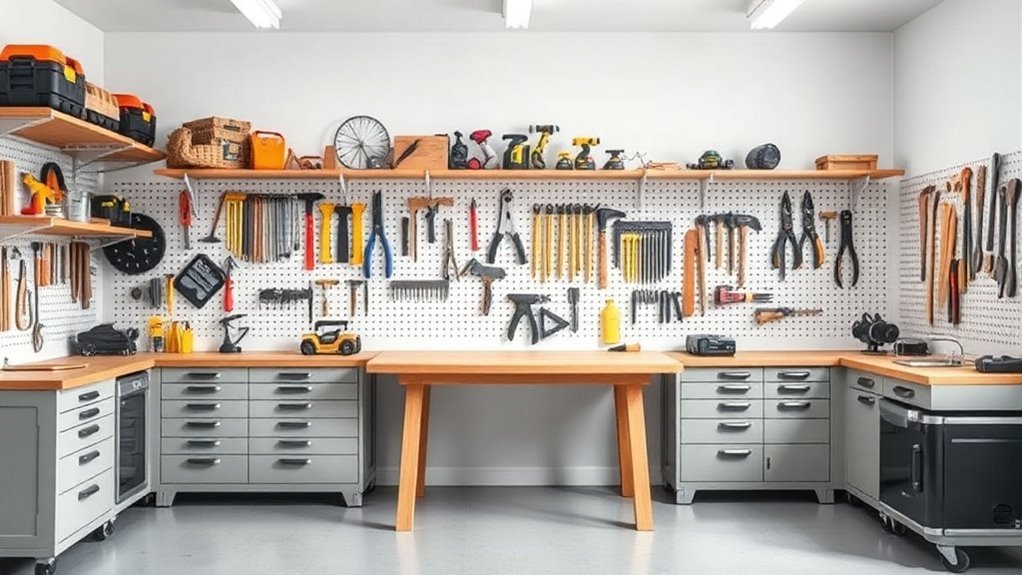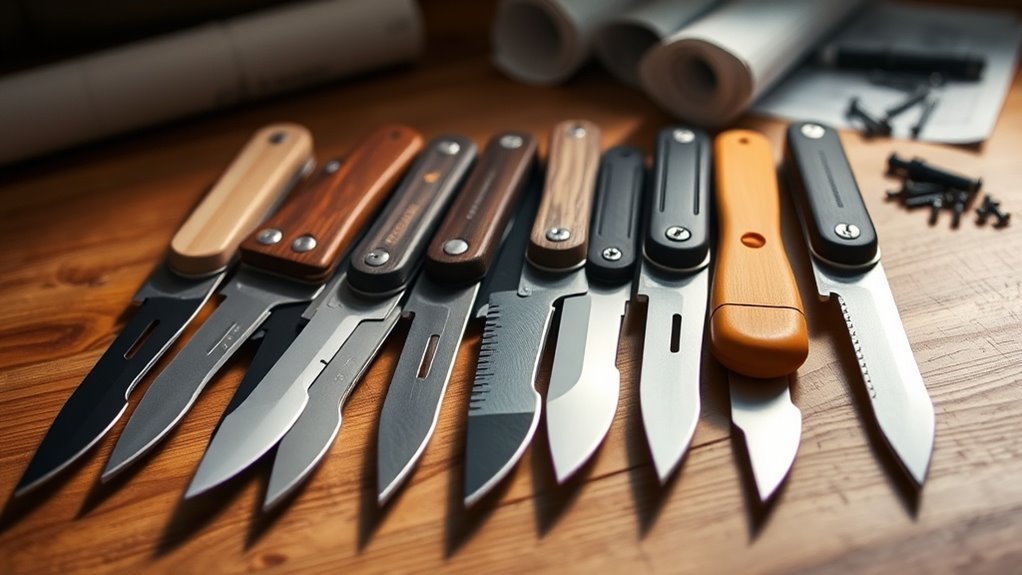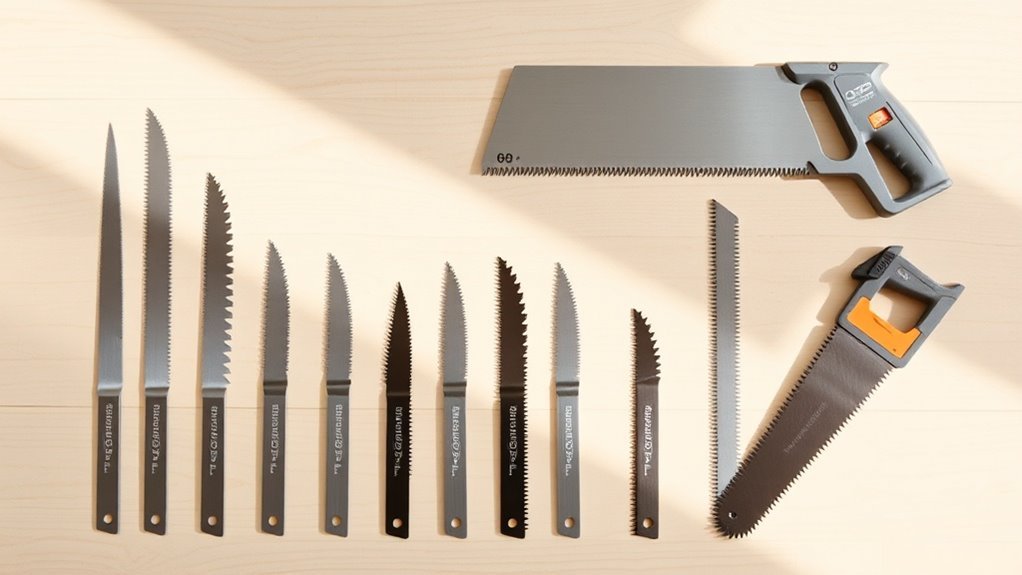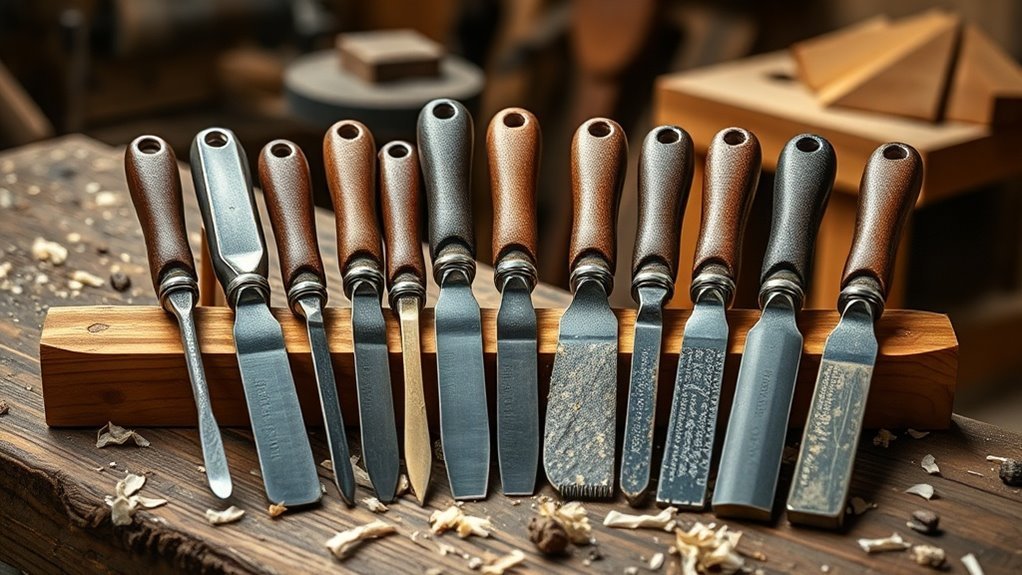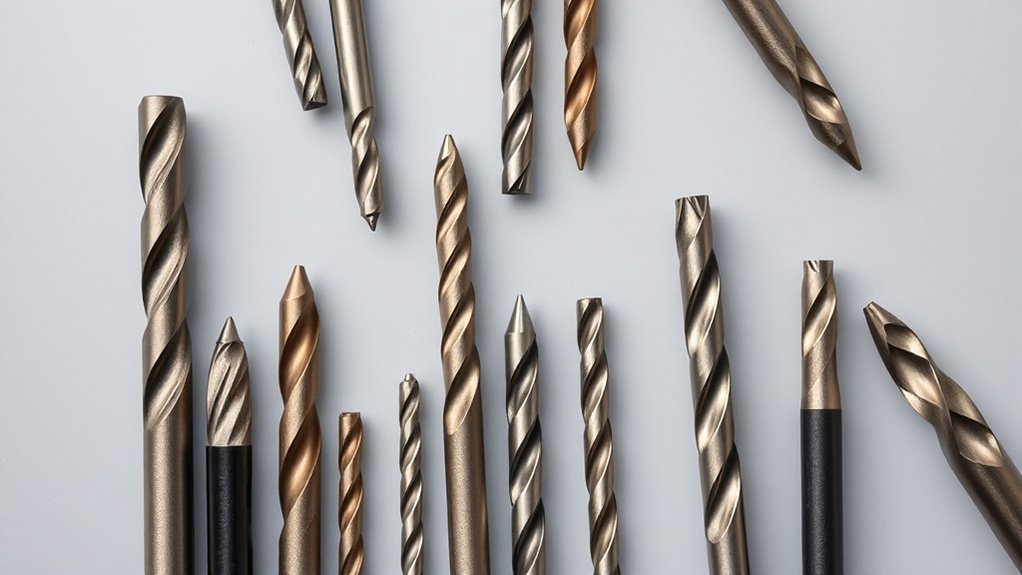Physics of Torque in Screwdrivers and Wrenches
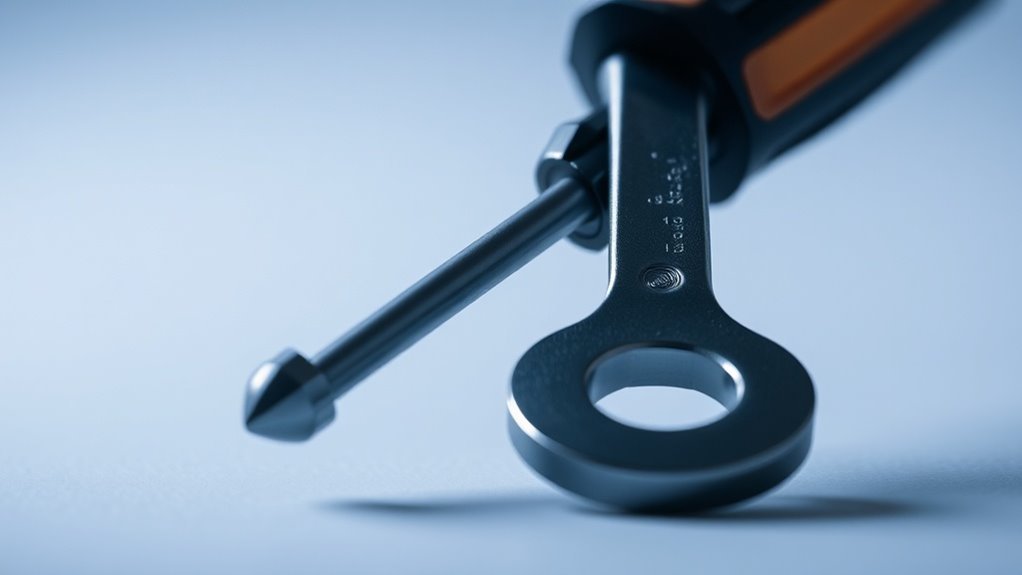
Understanding the physics of torque in screwdrivers and wrenches is essential for getting the job done right. Torque is the rotational force you apply, influenced by how hard you push and the length of the handle. Longer handles mean more torque with less effort. Different screwdrivers and wrenches are designed for specific applications to maximize torque efficiency. By mastering grip techniques and avoiding common mistakes, you’ll boost your effectiveness. There’s much more to learn about optimizing your tools for every task.
Key Takeaways
- Torque is generated by multiplying applied force and distance from the pivot, crucial for both screwdrivers and wrenches.
- Lever arm length significantly impacts torque; longer arms provide mechanical advantage, easing fastener turning.
- Different screwdrivers are designed for varying torque applications, optimizing efficiency for specific tasks.
- Wrenches come in various designs to enhance torque application, including adjustable and ratchet styles.
- Proper grip and maintenance techniques are essential for maximizing torque and tool longevity in practical applications.
Understanding Torque: The Basics
When you think about using tools, understanding torque is crucial because it directly impacts how effectively you can apply force.
Torque is the rotational force that causes an object to turn around an axis. It’s calculated by multiplying the distance from the axis of rotation to where you apply the force by the amount of force itself.
The farther you’re from the pivot point, the more torque you can generate. So, using a long handle on a wrench can make loosening tight bolts a lot easier.
Recognizing this principle helps you choose the right tools and techniques for various tasks, ensuring you maximize efficiency and safety during your projects.
Fundamentally, grasping torque simplifies your work with tools. Additionally, understanding RPM and torque can help you optimize the performance of various machinery and tools in your projects.
The Role of Force in Torque Calculation
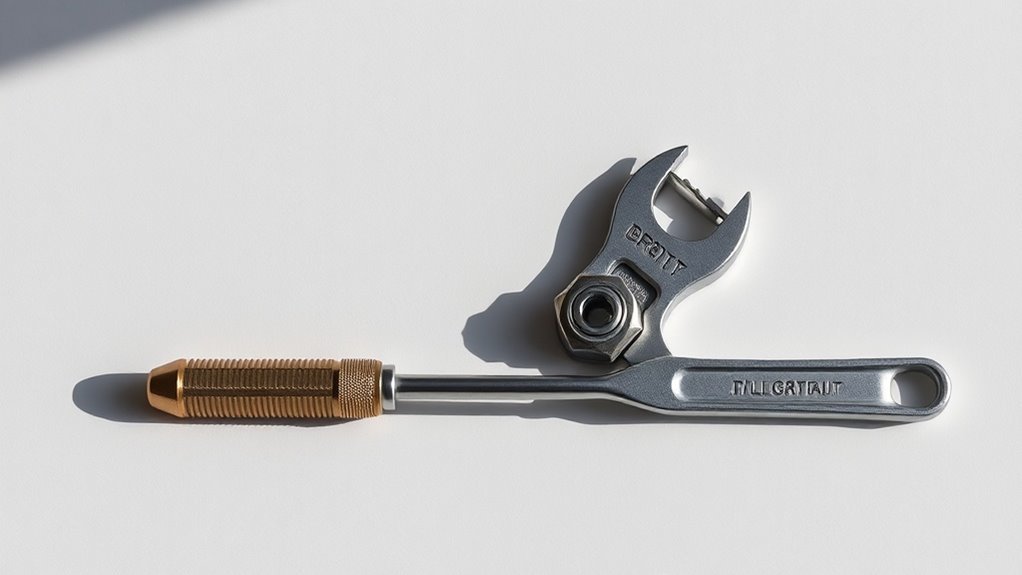
Although torque is influenced by the distance from the pivot point, the force applied plays an equally crucial role in its calculation. When you apply a force through a tool like a screwdriver or wrench, it generates torque, which helps you turn a fastener.
The greater the force you exert, the more torque is produced. This means that light, controlled pressure mightn’t be enough to move stubborn bolts, while a more forceful push could easily get the job done. Understanding the importance of correct torque settings is vital to prevent damage or failure of components.
Lever Arm Length and Its Impact
When you’re using tools, the length of the lever arm can considerably affect how much torque you can generate.
A longer lever arm typically means you’ll have a greater mechanical advantage, allowing you to apply less force for the same amount of torque. This principle of leverage in wrenches illustrates how increasing the handle length enhances your ability to turn fasteners efficiently.
Understanding this relationship helps you choose the right tools for the job and improves your efficiency.
Lever Length Effect
Understanding how lever arm length impacts torque is essential for optimizing the efficiency of tools. When you use a longer lever arm, you’re effectively increasing the distance from the pivot point to the point where force is applied.
This extra length allows you to apply the same force with greater torque, making it easier to turn a fastener or move an object. For instance, using a wrench with a longer handle means you can exert less effort while still achieving the desired torque.
Conversely, using a shorter lever arm requires more force to achieve the same torque, which can lead to fatigue or inefficiency. So, the lever length really makes a difference in how effectively you can work with your tools.
Optimal Torque Generation
The length of the lever arm not only influences how much force you need but also plays a key role in generating ideal torque. A longer lever arm allows you to apply less force, while still achieving the same torque. This effect is vital in tasks like tightening bolts or loosening stubborn screws.
Here’s a table that shows the relationship between lever arm length, force applied, and resulting torque:
| Lever Arm Length (in) | Force (lbs) | Torque (in-lbs) |
|---|---|---|
| 1 | 10 | 10 |
| 2 | 5 | 10 |
| 3 | 3.33 | 10 |
| 4 | 2.5 | 10 |
| 5 | 2 | 10 |
Understanding this relationship helps you choose the right tool for the job.
Types of Screwdrivers and Their Torque Applications
Screwdrivers come in various types, each suited for specific tasks and torque applications.
Flathead screwdrivers, with their single blade, are perfect for slotted screws, delivering moderate torque.
Phillips screwdrivers, featuring a cross-shaped tip, engage better, allowing for increased torque, especially in compact spaces.
Torx screwdrivers, with their star-shaped design, provide excellent grip and prevent cam-out, making them ideal for high-torque applications in electronics and automotive work.
Allen wrenches, designed for hexagonal sockets, can generate substantial torque, useful for tightening bolts.
Finally, precision screwdrivers cater to delicate tasks, ensuring effective torque without damage. Notably, understanding the importance of selecting the right pliers for specific tasks can also enhance overall tool efficiency and effectiveness during assembly or repair work.
Understanding these types helps you choose the right screwdriver, improving efficiency and reducing the risk of stripping screws or damaging materials.
Exploring Different Wrench Designs
When it comes to wrenches, understanding their designs can make a big difference in your projects.
You’ll find that adjustable wrenches offer flexibility, while ratchet wrenches improve efficiency during repetitive tasks.
Specialized socket types can also enhance your grip and torque application, making each job easier and more precise. Additionally, using ratchets and socket sets can significantly increase your overall efficiency by allowing for quicker adjustments without repositioning.
Adjustable Wrench Mechanics
While selecting the right adjustable wrench can enhance your efficiency, understanding its mechanics—like how different designs impact torque—plays an essential role in your toolbox.
The classic design, with a fixed jaw and a movable jaw, offers versatility for various fasteners. You’ll notice that some wrenches have smoother adjustments, providing better grip and torque without slipping.
Consider the wrench’s length as well; a longer wrench generally allows for greater torque, making it easier to loosen tight screws.
Also, pay attention to the jaw breadth, as a wider jaw can distribute force more evenly and minimize damage to the fastener. By grasping these nuances, you can select an adjustable wrench that not only meets your needs but also maximizes your effectiveness.
Ratchet Design Efficiency
Although various wrench designs serve specific tasks, ratchet wrenches stand out for their efficiency and ease of use. They allow you to tighten or loosen bolts without having to reposition the tool constantly, which saves time and effort.
Here are four key advantages of ratchet design:
- Continuous Motion: You can apply torque in tight spaces without needing to lift the wrench.
- Quick Adjustment: Switching between tightening and loosening is seamless, improving workflow.
- User Comfort: Ergonomic handles make it easier to apply force effectively, reducing user fatigue.
- Versatility: They can be used with various socket sizes, making them adaptable for different jobs.
These features collectively enhance your efficiency when tackling tasks that require precision and speed.
Specialized Socket Types
Whether you’re a seasoned mechanic or a DIY enthusiast, understanding specialized socket types can greatly enhance your toolset’s effectiveness. Different jobs require different sockets.
For instance, deep sockets allow you to reach fasteners in tight spaces, while swivel sockets provide flexibility for awkward angles. If you’re working with metric or SAE fasteners, having both types can save you time and frustration.
Impact sockets are another must-have; they’re designed to withstand higher torque and prevent cracking. Don’t forget about spark plug sockets, which have a rubber insert that securely grips spark plugs.
Proper Grip Techniques for Maximum Torque
To maximize torque when using tools, you should focus on your grip technique. A proper grip not only enhances your control but also allows you to apply maximum force effectively.
Maximizing torque relies on mastering your grip technique for improved control and effective force application.
Here are some techniques to evaluate:
- Use Both Hands: If the tool permits, use two hands for better leverage and stability.
- Position Your Fingers: Keep your fingers wrapped securely around the handle, distributing pressure evenly.
- Brace Your Body: Use your body to stabilize the tool, leaning into the action to amplify force.
- Maintain a Steady Posture: Stand with your feet shoulder-width apart for balance, ensuring you’re grounded while you twist or turn.
Common Mistakes When Using Torque Tools
When using torque tools, it’s easy to make mistakes that can hinder performance and even lead to injury. One common error is relying too much on muscle instead of the tool’s mechanics. You might over-tighten fasteners, damaging them or causing tool failure.
Another mistake isn’t using the right tool for the job; using a wrench where a screwdriver is needed can compromise your work. Additionally, neglecting to calibrate your torque tool regularly can result in inaccurate readings, leading to improper fastening.
Finally, forgetting to check your grip can affect your precision, causing slips. Wearing appropriate safety gear can significantly reduce the risk of injury while working with these tools. Being mindful of these errors can guarantee safe and effective use of torque tools, ultimately enhancing your performance.
Real-world Applications of Torque in Everyday Tasks
Mistakes in using torque tools can disrupt projects, but understanding the real-world applications of torque can lead to more efficient and effective results.
By grasping how torque works, you can enhance your everyday tasks in ways you mightn’t expect.
Here are some practical applications:
- Car Maintenance: Properly tightening bolts and lug nuts guarantees safety and prevents damage.
- Furniture Assembly: Using the right torque can secure joints for long-lasting stability.
- Bicycle Repair: Correct torque helps maintain safety and performance while avoiding frame damage.
- Construction Projects: Confirming accurate torque on structural components maximizes overall safety and durability.
Tips for Maintaining Tools for Optimal Performance
Although you might rely on your torque tools for various projects, neglecting their maintenance can lead to decreased performance and lifespan.
To keep your tools in prime condition, start by cleaning them after each use. Dust, grime, and lubricants can build up, affecting their effectiveness. Check for any signs of wear or damage—if something seems off, it’s better to replace it than risk injury or further damage.
Regularly calibrate torque settings to guarantee accuracy. Store your tools properly in a dry place, away from extreme temperatures to prevent rusting.
Finally, don’t forget to periodically oil moving parts to maintain smooth operation. Following these simple steps can keep your tools functioning at their best for years, saving you time and money in the long run.
Questions
How Do I Choose the Right Screwdriver for My Project?
To choose the right screwdriver for your project, consider the screw type, size, and head shape. Match the screwdriver’s tips to guarantee a snug fit, and always prioritize comfort for ideal grip and control.
What Materials Are Most Screwdrivers and Wrenches Made From?
Most screwdrivers and wrenches are made from steel or high-carbon steel for strength, often tempered for durability. Some might have rubber or plastic grips for comfort, enhancing your handling and reducing slip during use.
Can Torque Values Be Measured Digitally?
Yes, torque values can be measured digitally using specialized torque wrenches or electronic gauges. These devices provide accurate readings and can help you guarantee you’re applying the correct amount of torque for various applications.
Does Temperature Affect Torque Performance?
Did you know that temperature changes can alter material properties by up to 30%? Yes, it does affect torque performance; higher temperatures can reduce grip and increase slippage, impacting your tool’s effectiveness in various conditions.
How Often Should I Replace My Torque Tools?
You should replace your torque tools every three to five years, or sooner if they show signs of wear or inaccuracy. Regularly inspect them for damage to guarantee consistent performance and safety during use.
Conclusion
To summarize, understanding torque is essential for maximizing efficiency when using tools like screwdrivers and wrenches. Did you know that applying torque at a distance of just six inches from the pivot point can double the pressure you exert on a screw? By leveraging proper grip techniques and maintaining your tools, you can make everyday tasks much easier and more effective. So, the next time you’re tackling a project, remember to use the physics of torque to your advantage!

